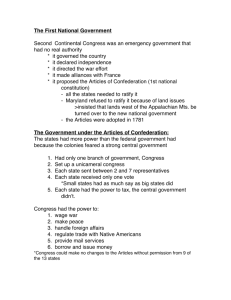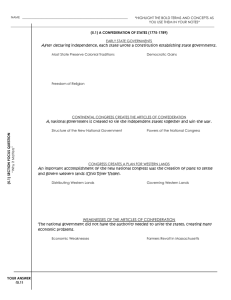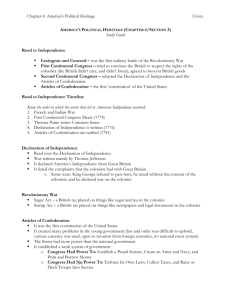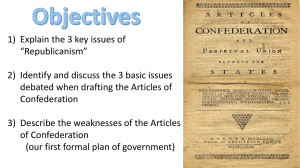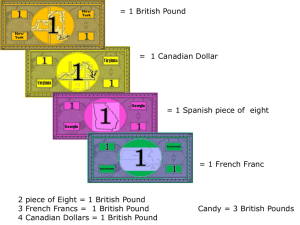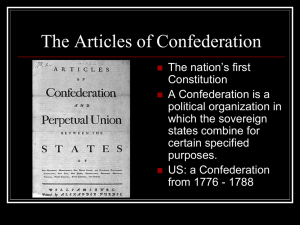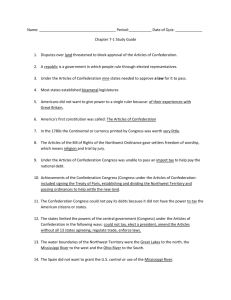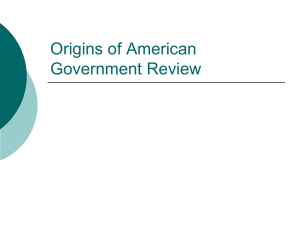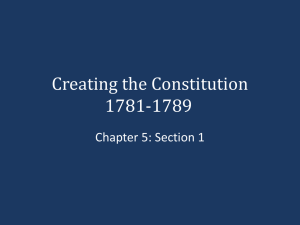Trouble on Two Fronts
advertisement
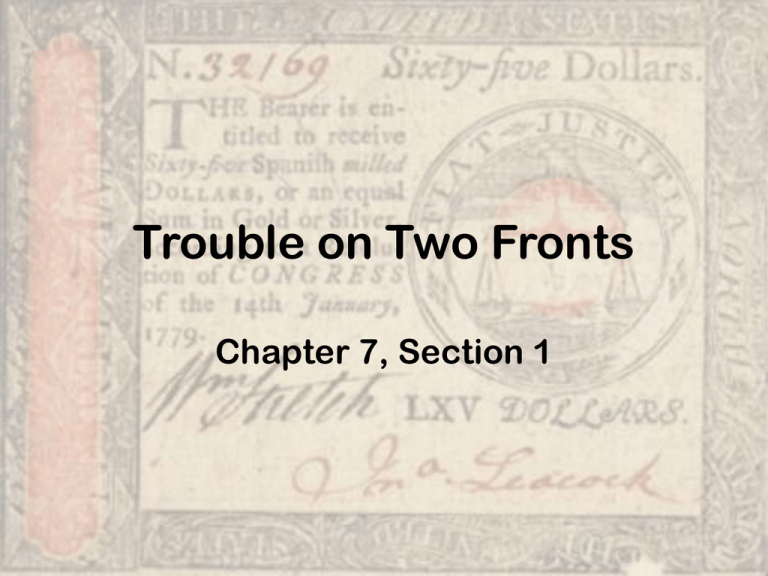
Trouble on Two Fronts Chapter 7, Section 1 By 1781 the money printed during the Revolutionary War had depreciated, or fallen in value, so far that it was almost worthless. To have value paper money needs to be backed by hard currency like gold or silver. However, the Continental Congress and the states printed so much paper money during the war without it being backed by hard currency that it quickly lost value. This led to inflation as it takes more and more paper money to buy the same amount of goods. It got so bad that there were food riots in many of the major cities like Boston. Also fighting the war left the Continental Congress with a large debt. The Congress had borrowed money from American citizens and foreign countries; it still owed Revolutionary soldiers their pay for military service and it lacked the resources to pay off these debts. The Confederation could not raise money through taxes and it requested funds from the states but the states contributed only a small portion of the money needed. Faced with the total collapse of the country’s finances, the Confederation Congress created a department of finance to find a solution. It was headed by Philadelphia merchant Robert Morris. In 1781 he proposed a 5 % tax on imported goods to help pay the national debt. The plan required the Articles of Confederation to be changed to give Congress the power to levy taxes. As required the 13 states voted on the issue but could not gain the required unanimous vote. In 1783 as the financial situation became worse the plan was sent for another vote but failed to win approval. Problems with Britain In the Treaty of Paris of 1783 that ended the Revolutionary War, Britain had promised to withdraw their troops from the western territory past the Appalachian Mountains. Yet the British troops continued to occupy several strategic forts in the Great Lakes region. The British also kept American merchants out of the West Indies and other profitable British markets for trade. In 1785 Congress sent John Adams to London to discuss these issues. But the British refused, pointing out that the United States had failed to honor its promises in the Treaty of Paris and repay the Loyalists for the property taken from them during the war. Congress had recommended that the states pay the Loyalists, but the states having more power than the national government had refused. Problems with Spain America also had problems with Spain. Spain was wary of America trying to take it lands in Florida and the Gulf coast. To stop Americans from moving into this territory they closed the lower Mississippi River to American shipping in 1784. This created a major economic disadvantage for the western farmers who depended on the river for transportation of goods. In 1786, American diplomats, headed by secretary of foreign affairs John Jay, reached an agreement with Spain. Southern representatives blocked the agreement from being ratified because it did not include the right to use the Mississippi River. The weakness of the Confederation and its inability to deal with problems worried many leaders. As George Washington described the government as a “shadow without substance,” many Americans began to agree that the country needed a stronger government. A call will go out to revise the Articles of Confederation, yet many founders of the nation believed that a further step must be taken—the creation of a new plan of government.
